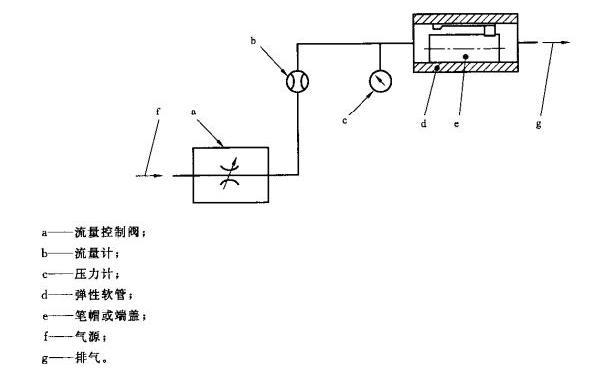Pen tester
It is produced according to the "General Requirements for Safety of Student Supplies" (GB21027-2007) (that is, the air ventilation of the cap must be 8L/min under the pressure of 1.33KPa), which is customized for the cap venting test. Detectioninstrument
. Reference standard: BS7272-1/-2:2008 Safety standards for suffocation protection of pen caps JTS S 6060:1996 Safety requirements for children's pens and marker caps under 14 years old (including 14 years old) ISO 11540 : 1993 Under 14 years old Safety requirements for children's writing pens and marker caps (including 14 years old) GB 21027:2007 General requirements for the safety of student supplies Application: * Applicable to the detection of various types of cap ventilation * Meet corrosive, impact, vibration and other places test * Meet the high-precision testing requirements of laboratories and industrial sites. * Replace traditional detection methods, intuitive and quick detection features: * Digital pressure meter display, high precision, good stability, convenient reading * Good anti-interference performance * Advanced power management technology * The aluminum alloy casing is sturdy and shock-resistant, and the explosion-proof* instrument adopts a portable chassis design, which is not limited by the use space, and adopts a rotatable support handle, which can make the instrument support upwards at a suitable angle. Working principle: Gas below 1 MPa enters the cap tester and passes the cap test. The first decompression of the instrument, the gas pressure is reduced to below 0.2 MPa, and then the second reduction of the pen tester The pressure of the pressure is controlled at about 40KPa to enter the flowmeter for the test of the cap ventilation.
Technical data: 1. Flowmeter: It can measure air flow at 5L/min and 10L/min with an accuracy of ±0.2L/min; 2. Digital precision pressure gauge: can measure pressure of 4.0kPa with an accuracy of ±0.01kPa; Inlet pressure: 1MPa or less; 4. First pressure reduction: 0.2MPa; 5. Second pressure reduction: 40-50KPa; 6. Temperature: -30 °C ~ 60 °C, humidity: <90%; Intake pipe diameter: Ф8; 8. Outlet pipe diameter: Ф8, Ф10, Ф12, Ф14, Ф16 According to the size of the cap; 9. Voltage: 220V; Usage: 1. Connect the power cable to 220V mains; 2.1MPa or less The pressurized gas enters the cap tester through the cannula of Ф8; 3. Adjust the first step-down knob, adjust the pressure to about 0.2MPa, adjust the pressure, lock the pressure; 4. Adjust the second step-down knob to adjust the pressure to 40~50kPa or so, after adjusting, lock the pressure; 5. Connect the test component to the test port of the instrument; 6. Turn the flow adjustment knob to read the flow rate display when the front digital display pressure shows 1.33Kpa Instantaneous flow rate, repeat several times, record the value, calculate the average value; instrument calibration: 1. Number micro pressure gauge detection: gas pressure detection port from the back of the instrument To test the accuracy of the pressure gauge. 2. Flow detection: From the flow detection inlet at the back of the instrument, the air inlet can be inserted into the air pipe to perform the accuracy test at a pressure of 0.1 Mpa (national standard). Note: 1. The upper left knob of the instrument is the first step-down adjustment knob, and the right knob is the second step-down adjustment knob 2. When adjusting the pressure, pull the knob cap up, turn it clockwise to increase the pressure, and counterclockwise to make the pressure smaller. After the adjustment is completed, press the knob cap to lock the state. At this time, the knob cannot be adjusted (in principle, the knob cannot be adjusted). The first step-down adjustment knob and the second step-down adjustment knob have been adjusted before leaving the factory, and the user does not need to move. The outlet of the pen tester must not be blocked. The pressure inside the instrument will cause damage to the internal micro pressure sensor. 4. The internal circuit and pipeline of the instrument are more complicated and cannot be opened privately. If you have any problems, please contact our technical staff.
Modified Sine Power Inverter,Sine Wave Vs Square Wave Inverter,Modified Sine Wave Power Inverter,Modified Sine Wave Inverter
zhejiang ttn electric co.,ltd , https://www.ttnpower.com